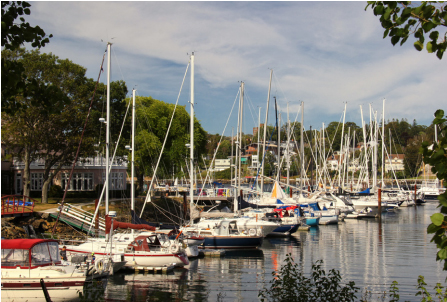Duncan’s Cove, Nova Scotia
Read Duncan’s Cove Blog.
Duncan’s Cove is a small rural community on the Chebucto Peninsula in the Halifax Regional Municipality on the shore of the Atlantic Ocean on the Ketch Harbour Road (Route 349), 19 kilometers from Halifax. The community is located beside Chebucto Head, the prominent coastal headland.
History
Duncan’s Cove began as a small fishing community. The first recorded settler in Duncan’s Cove was Simon Duntoyn in 1752. The cove was named after Admiral Adam Duncan, 1st Viscount Duncan who defeated the Dutch at the Battle of Camperdown.

Overlooking the entrance to Halifax Harbour made it a strategic part of Halifax’s defense system in the 18th century. The Camperdown Signal Station, was built a few miles northward next to nearby Portuguese Cove in 1797, the first of a series of signal stations built by Prince Edward, Duke of Kent. It later became a wireless station and was operational until 1925.
In World War Two, the area around Chebucto Head, including Duncan’s Cove, became a fortified coastal battery armed with three Elswick 6 inch naval guns. For these cannon, a four-story concrete director tower was built near the eastern shore of Duncan’s Cove with a longrange optical rangefinder installed on the top floor. By 1943, this range-finding apparatus had been supplanted by the latest radar artillery control unit. The battery complex was decommissioned in the 1950s but many bunkers remain, some converted into private residences.
After the Second World War two families of musicians who played with the Atlantic Symphony Orchestra moved to Duncan’s Cove. One of those families embarked upon a decades-long construction project of unconventionally shaped timber-framed dwellings, and even had a small private airstrip. By the late 1960s, fishing from the cove had dwindled and the community become known as an artists’ colony, with many symphony players, visual artists and theatrical actors residing there. The landmark gunnery director tower stood derelict for many years, until finally passing into private hands in the 1990s. The building is virtually unrecognizable today, having been radically converted into a luxury residence.
Nature Reserve
Duncan’s Cove Nature Reserve has one of HRM’s top coastal hikes, if not the best. Whales have been spotted in this area in the spring, bringing a pair of binoculars will increase your chances of seeing them, as well as getting a closer look at seals and shipping traffic beginning or ending their long Atlantic journey.This area is also the only known mainland Nova Scotia locality supporting the provincially rare Arctic Blueberry.
Leisure:
Duncan’s Cove is within easy reach of Purcell’s Cove Marina and the Royal Nova Scotia Yacht Squadron. The Squadron is home to close to 900 members from Canada, the United States, and international regions and offer instructional programs and on-water activities for all ages, with the largest learn to sail program in Atlantic Canada. One of Halifax’s best loved beaches is just a short drive away from Duncan’s Cove, Crystal Crescent beach is actually three whitesand crescent beaches located at the mouth of Halifax Harbour. Boardwalks to the first two beaches. Trailhead for a hike to Pennant Point, 10 km (6 mi) which provides interesting birding and wildlife viewing.
Area Schools:
Sambro Elementary
Herring Cove Junior High
William King Elementary
Central Spryfield School
J L Ilsley High School






